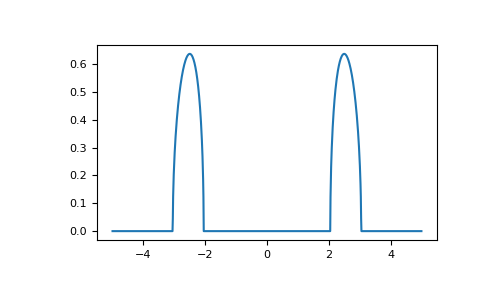gftool.hubbard_I_self_z
- gftool.hubbard_I_self_z(z, U, occ)[source]
Self-energy in Hubbard-I approximation (atomic solution).
The chemical potential and the onsite energy have to be included in z.
- Parameters:
- zcomplex array_like
The complex frequencies at which the self-energy is evaluated. z should be shifted by the onsite energy and the chemical potential.
- Ufloat array_like
The local Hubbard interaction U.
- occfloat array_like
The occupation of the opposite spin as the spin of the self-energy.
- Returns:
- complex array_like
The self-energy in Hubbard I approximation.
Examples
>>> U = 5 >>> mu = U/2 # particle-hole symmetric case -> n=0.5 >>> ww = np.linspace(-5, 5, num=1000) + 1e-6j
>>> self_ww = gt.hubbard_I_self_z(ww+mu, U, occ=0.5)
Show the spectral function for the Bethe lattice, we see the two Hubbard bands centered at ±U/2:
>>> import matplotlib.pyplot as plt >>> gf_iw = gt.bethe_gf_z(ww+mu-self_ww, half_bandwidth=1.) >>> __ = plt.plot(ww.real, -1./np.pi*gf_iw.imag) >>> plt.show()
